Author: Isaac
Test printing!

Dn’R: Erasing Asian American Midcentury Design
https://planamag.com/erasing-asian-american-midcentury-design-330d33aa828
This arcticle is a survey of three Asian Americans architects and designers whose creations are famous icons of amererican pop culture.
- Minoru Yamasaki Was the designer of the Pruitt-Igoe housing project and more famously the twin towers. Though he created many other buildings these two were destroyed. Pruitt-Igoe was demolished after it became a home to crime and vandalism and the twin towers… well you know. Both of which were blamed on imagines design failures of Minoru Yamasaki.
- Larry Shinoda designer of one of the most famous Influential American sport cars the first corvette stingwray. His contributions are minimized in corvette’s history books and many car people diminish him further.
- Helen Liu Fong designer of Pam’s Diner in LA as well as the diner shown in the movie pulp fiction. Two pieces of Americana drastically impacting the American imagination. She is often uncredited for he work.
The main point of the arcticle is that there are a lot of designs that hold a place permantly in American nostalgia and culture whose creators are ignored and assumed to be the spontaneous products of white American when in fact each has a creator many of whom are people of color.
D&R: Chinese Exclusion and the Statue of Liberty
I wanted to take this opportunity to share a story from my research that I couldn’t find a place for in my project.
apparently the passing of the Chinese exclusion act and the assembling of the statue of liberty were not all that far apart in time. In fact very soon after the Chinese exclusion act was passed, New York began fund raising to build the pedestal on which lady liberty stands.
Many Chinese Americans were asked to contribute funding to this statue that represented the inclusive vision of America. and they were not happy about it.
This is an excerpt from the book “Yellow Peril: an archive of anti Asian fear”


complete 1st draft
Drifting House: Response
DISCUSSION QUESTIONS
- The title story in the collection, “Drifting House,” tells of two young brothers attempting to escape from North Korea to China. Why did Lee select that story as the title story? What does the title refer to?
When I first read it I wasn’t exactly sure. The story was a particularly good story. But now I kind of see having reflected and read the interview with her. For one the character in the story refers to himself as a drifting house for his younger sister because he bares her on his back. But also in the interview the author refers to drifting house as a way to describe the feeling of home in the heart of both refugees and immigrants. Where is your true home if you are living in America after growing up in Korea. Where is your true home if you were born in North Korea?
- What concerns and emotions unite the stories in this collection? If you had to describe the book to a friend in a sentence or two, what would you say?
There’s a lot of surrender. Surrender to what seems like the end of life or what actually is the end of life. People feeling like “nothing will ever change again. I am cursed.” But sometimes the stories are about discovering hope in that bleakness. Usually discovering something within themselves they’ve buried. Or something buried by someone they love.
If I had to pitch this book to a friend I would say. “Well written, very depressing, short story collection.”
- Certain characters appear in more than one story; identify these stories and characters. How do the narratives influence each other and alter your understanding of those characters? Why did the author choose to connect the stories in this way?
I didn’t realize these stories were directly connected at all until reading this question. One that I realize now is that “at the edge of the world” and “drifting house” are directly connected. Which much more explicitly establishes the history of mark’s parents. And specifically his father’s relationship with the supernatural and family.
- Drifting House focuses specifically on the Korean and Korean American experience. If this setting is foreign to you, does it make it harder to connect to the stories? If the setting is familiar to you, does Lee’s representation strike you as accurate?
It is foreign to me yet the characters don’t feel so removed from me that I can’t empathize with them. For one Krys wrote the book for an American and Korean audience. So the stories do explain a bit about the history of life in Korea. Also many of the characters are grappling with specifically Korean situations but experiencing emotions and pain that should be familiar to anyone.
- In “The Goose Father,” the narrator makes reference (see pp. 83 and 87) to the formalities of interpersonal relationships between older and younger Koreans, formalities that seem to restrict comfort and honesty. Do similar formalities exist in North America?
Not really. I do feel a certain kind of kinship with my peers that I don’t share with people or different generations. But that is not the only kind of kinship I am comfortable with. I feel it’s percectly normal for people to have friends from many different age groups as soon as you’re out of high school. This story was interesting because at the beginning I didn’t know anything about those age dynamics. But they became apparent throughout the story.
- The scars of war and deprivation mark the older characters and influence their behavior. Find two examples of this in the stories.
- Many of the stories are challenging, even disturbing, because of the various types of domestic violence exhibited and their casual acceptance by the characters. How did you respond to this?
- In “A Temporary Marriage,” Mrs. Shin says, “I prefer a world without men” (p. 3), a comment that could easily be echoed by other women in the book. Which of the stories best illustrates the limitations and frustrations of being female in Korean culture? Do you believe that similar issues challenge American women?
- How has this collection of stories altered your perceptions of Korean culture specifically and immigrants in general? Was there one particular character whose experience struck a chord with you?
- Thinking of your own racial, religious, or cultural history, what similarities can you find with the characters in the stories? What have you overcome and what do you value? What has been troubling to you and what makes you proud?
Incomplete Draft a little short (for now)
White America’s fear of Asia takes the form of an octopus…
 The United States Marines #3 (1944)
The United States Marines #3 (1944)
Or else a claw…
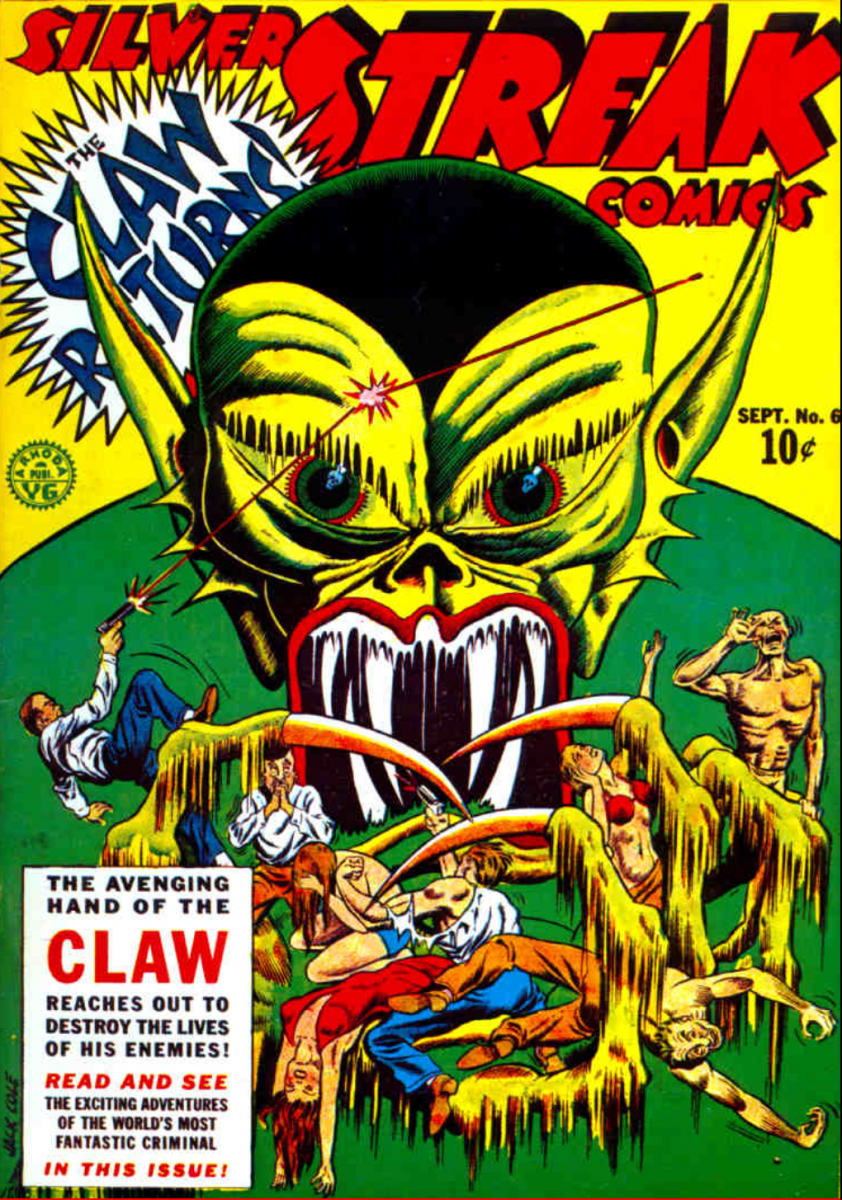
Silver Streak Comics #6 (Sept. 1940)[1]
[1]Silver Streak #6 is the first appearance of Daredevil
Creatures whose purpose is to reach out and ensnare.
Before the Octopus became a symbol of racial fear it was often used in satirical cartoons to stoke a fear of hegemony…
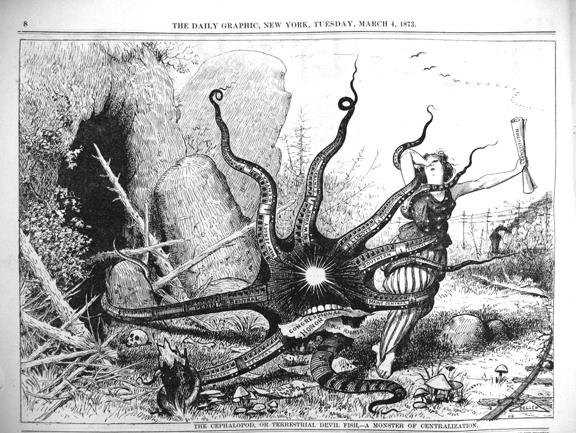
Frank Bellew’s illustration here from 1873 shows the tentacles of the railroad monopoly (built on the underpaid labor of Chinese immigrants) ensnaring our dear Columbia as she struggles to defend the constitution from such a beast.
The Threat is clear, the railroad monopoly is threating our national sovereignty.
But wait…
Isn’t that the same Columbia who the year before…

Yep…
Maybe instead of Columbia frightening away Indigenous Americans as she expands west, John Gast should have painted an octopus reaching out across the continent grabbing land away from them.
White America’s relationship with hegemony has always been hypocritical.
[1]Silver Streak #6 is the first appearance of Daredevil
Filipinx America: Final Thoughts
I don’t think I really understood the magnitude of Filipinx peoples cultural impact of the united states (specifically the west coast and Washington!) until this week.
Even though each week I learn a lot about the role different APIA group played in the cultural history of the United States, it seems to me that a lot (not enough) of Chinese American and Japanese American contributions are visible in our pop culture through Kung Fu movies, Chinese Restaurants, Akira Kurosawa films, and sushi restaurants.
But learning that Washington state has an important history of Filipinx immigration really blew my mind. I’m really happy that I chose Filinix America to report on. I really feel as though I’ve become able to see something that was in plain sight but I had inadvertently ignored.
The role Pinoy’s had in shaping Boxing, Seattle, and Comics is immeasurable. And the history of Philippines as a nation, and a geography of peoples is tragic and inspiring in itself, as well as enlightening of the imperialistic tyranny of the United States.
(and Peter Bacho is awesome)
DnR: The Great Pinoy Boxing Era
Though a bit outdated in feel. This is a really interesting and short documentary. In addition too historical commentary, it features interviews with many of the boxers who participated, and many Pinoys who remember the fights. Also many interviews with Peter Bacho and some people who were characters in dark blue suit.
When the us armt brought boxing to the Philippines, the locals quickly took up the sport and mixed it with their own martial arts in ways that are still with boxing today.
This new style gave the phillipino boxers an advantage but also the only phillipno boxers (at first) who came to America were the very best in the phillipines. So Pinoy boxers really seemed super powered at the time. Giving hope to a lot of Pinoy workers who felt beaten down by racism and oppression.
Outline and shifting proposal.
I think I’m going to make a zine; Call it something like “Race War: Racism and Hypocrisy in WW2 Comics.” everyone will get a copy.
Obviously the entirety of this zine will be posted on my blog, (and in color on my blog) but I like the complete object of a booklet, and thinking of composing in discreet pages as opposed to an infinite scroll is more creatively stimulating for me.
So the Current plan is something like:
- Ch 1: The Octopus
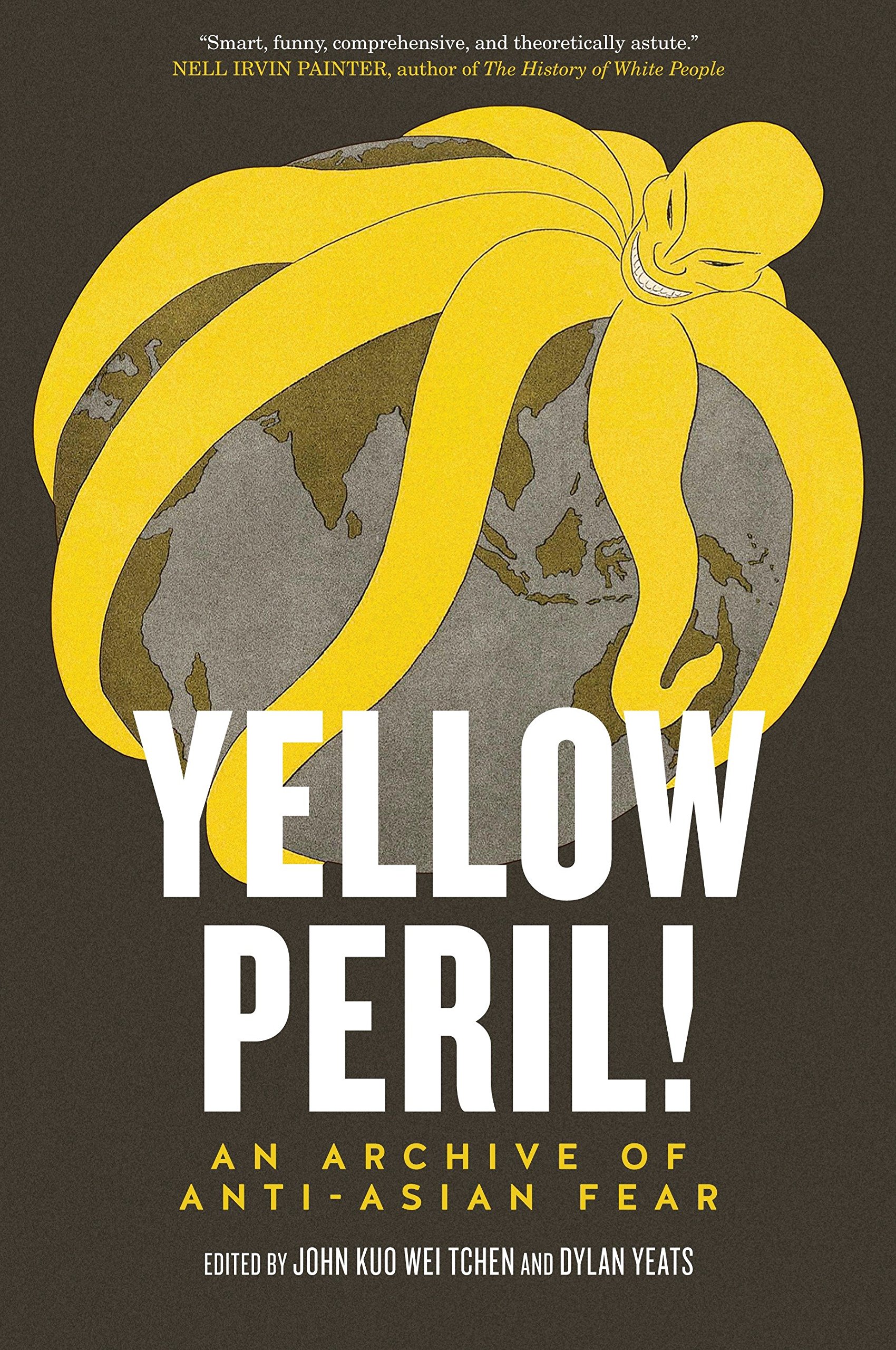
- Talking about the history of the octopus as a symbol of hegemonic fear and as a racial fear as discussed in “Yellow Peril” and connect it to the fear of an Asian planet. The same symbols used to criticize monopoly were mobilized to stoke fear of Chinese people taking over the world and then mobilized to a fear of Japanese taking over the world.
- show images of octopuses in comics (very common)

- Ch 2: Phrenology
- the paper “this is our enemy” talks about the duo message that american propaganda comics pushed. Talking about America’s racial harmony while also portraying Japanese people as racially defective. i want to connect this view of racial dysfunction to the racist “science” of Phrenology discussed in war without mercy and yellow peril.
- Carl Linnaeus “five categories of homo sapiens”
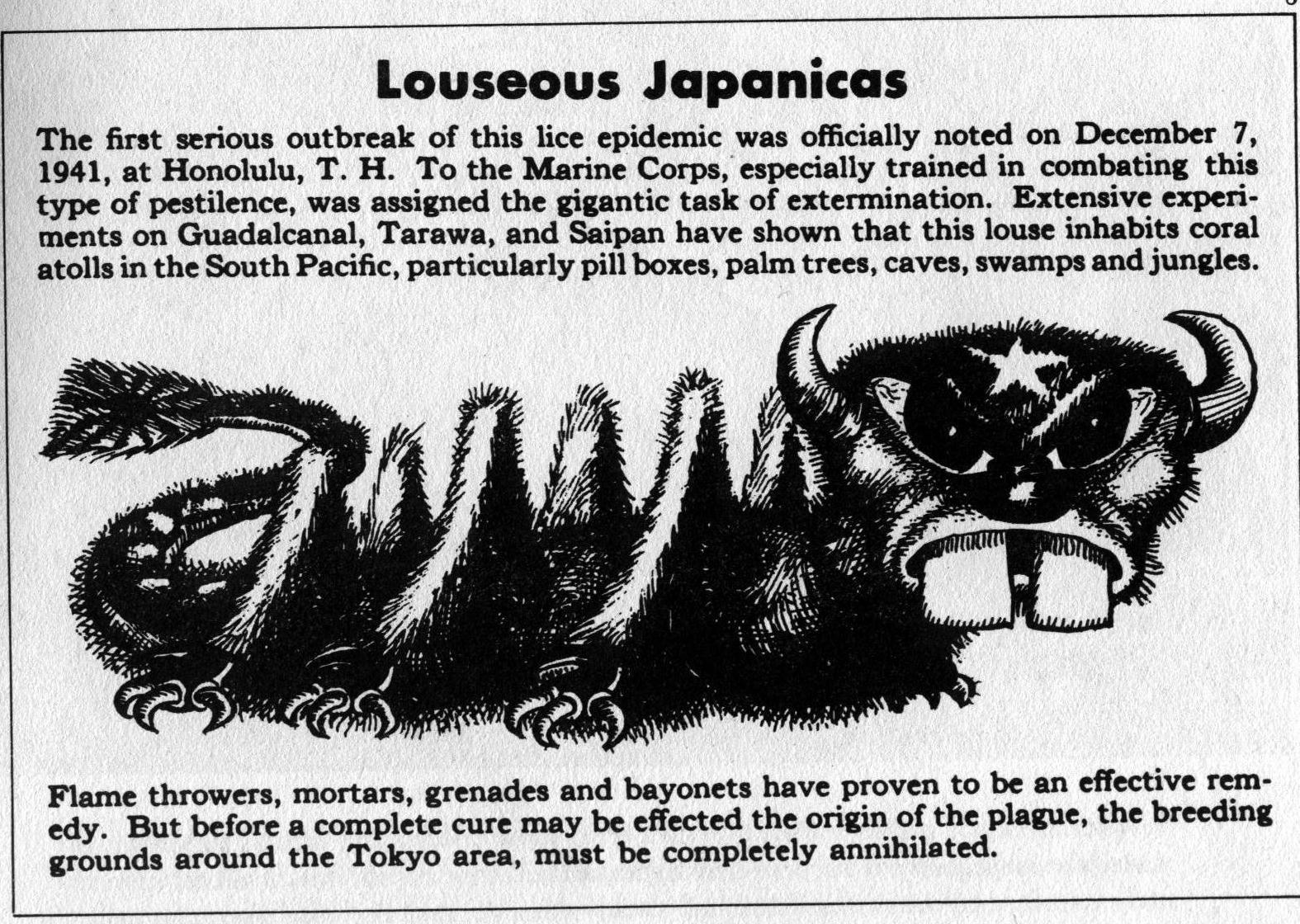
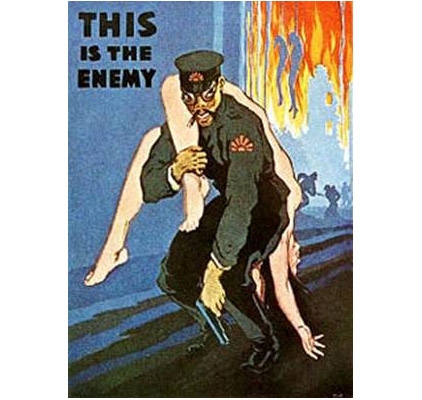
- Ch 3: comics as propoganda

- some of the history of why comics as propaganda?
- hypocrisy of intentions “we don’t have propaganda”
- “comics and conflict” and “this is our enemy”
- Ch 4: Well they we’re more evil right?
- War without mercy talks about the Japanese viewing themselves as liberating Asia from colonialism.
- Norakuro japanese propaganda comic translated in Kramer’s Ergo 6. show’s the japanese army as liberating asia from the “pigs” after which the different animals can live together under the watchful grace of the japanese
- War without mercy points out all the way’s that we embody all the bad things we said about the japanese MacArthur’s “fight to the last man,” the american concentration camps, american racism, american war crimes.